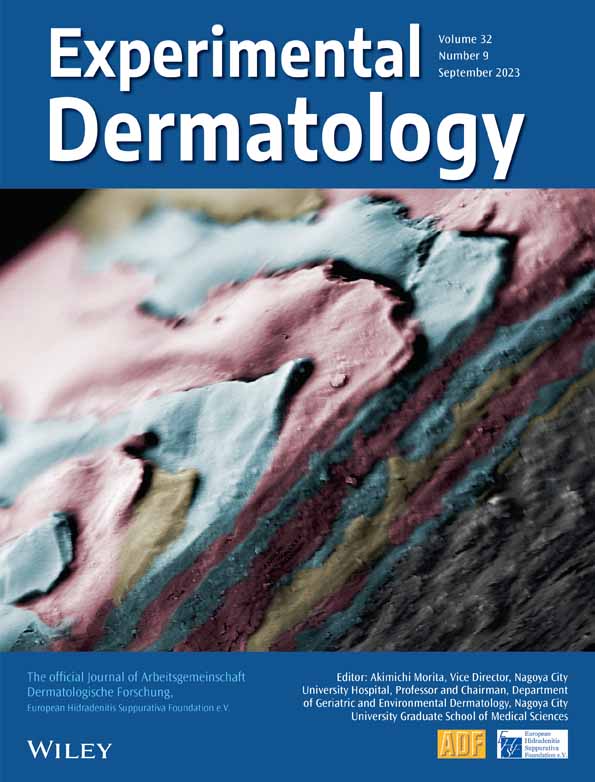Dupilumab-associated ocular adverse events are predicted by low tear break-up time and correlate with high IL-33 tear concentrations in patients with atopic dermatitis
A. Chiricozzi and L. Di Nardo contributed equally.
Abstract
Dupilumab, blocking IL-4 and IL-13 signals, improves atopic dermatitis and Quality of Life but might be also associated with the occurrence of ocular adverse events (OAEs). The main objective of our prospective study was to characterize the cytokine and chemokine profile in the tear fluid of dupilumab-treated patients with moderate-to- severe atopic dermatitis and to identify biomarkers predicting the occurrence of ocular adverse events. Patients with moderate-to-severe AD underwent dermatological and ophthalmological evaluation at the baseline (T0) and week 16 or at the time of an eventual ocular adverse events (T1). A multiplex immunoassay measuring multiple cytokines and chemokines in the tear fluid extracted during ocular examination at both T0 and T1 was performed. Thirty-nine patients with moderate-to-severe AD and treated with dupilumab were included in the study. Baseline tear fluid levels revealed a significantly higher concentration of type 2 cytokines and chemokines in AD patients than healthy controls. The occurrence of ocular adverse events during dupilumab therapy was associated with a significant increase of IL-33 tear fluid levels and a significantly lower tear break-up time, this latter also identified as predictive factor. Our findings suggest that the ophthalmological examination should be considered a valid support to identify patients at risk of developing OAEs and to provide their appropriate management.
CONFLICT OF INTEREST STATEMENT
Ketty Peris has served on advisory board, received honoraria for lectures and/or research grants for Abbvie, Almirall, Lilly, Galderma, Leo Pharma, Pierre Fabre, Novartis, Sanofi, Sun Pharma, Janssen. Andrea Chiricozzi has served as advisory board member and consultant and has received fees and speaker's honoraria or has participated in clinical trials for AbbVie, Almirall, Bristol Myers Squibb, Leo Pharma, Lilly, Janssen, Novartis, Pfizer and Sanofi Genzyme. Niccolò Gori has served as advisory board member or speaker for AbbVie, Leo-Pharma and Sanofi Genzyme. Lucia Di Nardo, Flaminia Antonelli, Gustavo Savino, Giovanni Cuffaro, Giampaolo Tortora and Geny Piro have no conflicts of interest to declare.
Open Research
DATA AVAILABILITY STATEMENT
The data that support the findings of this study are available from the corresponding author upon reasonable request.




